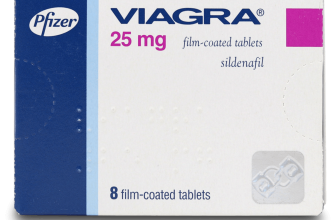Focus on the specific portrayals of women in Viagra commercials. Analyze the demographics, the implied roles and activities, and the overall messaging. This provides a nuanced understanding of the target audience and the advertising strategy.
We’ll examine specific commercials, noting the age range, professions, and lifestyles of the women featured. Consider how these portrayals relate to broader societal expectations and stereotypes. We’ll dissect the visual language–clothing choices, settings, body language–to uncover subtler meanings.
Finally, we’ll discuss the impact of these representations. Do they empower women or reinforce existing gender roles? How do these commercials affect viewers’ perceptions of female sexuality and aging? The goal is to offer a critical analysis beyond superficial observations.
- Viagra Commercial Ladies: A Detailed Look
- Analyzing the Visuals
- Understanding the Message
- The Evolution of Female Representation in Viagra Commercials
- Analyzing the Demographics and Portrayal of Women in Viagra Ads
- Age and Appearance
- Role and Agency
- Recommendations for Improved Representation
- Impact of Portrayal
- The Impact of Marketing Strategies on Public Perception of Female Sexuality and Viagra
- Critique of Gender Stereotypes and their Role in Viagra’s Advertising
- The Future of Female Representation in Pharmaceutical Advertising: Lessons from Viagra
Viagra Commercial Ladies: A Detailed Look
Focus on the portrayal: Viagra commercials featuring women often highlight themes of renewed intimacy and connection, portraying a happy, active lifestyle enabled by improved sexual health. The women depicted tend to be attractive, but importantly, they’re presented as relatable and confident, not merely as sex symbols. Their ages vary, aiming for broad appeal.
Analyzing the Visuals
Commercial directors strategically use lighting, setting, and clothing to create specific moods. Often, scenes showcase couples enjoying activities they might have struggled with before. Observe the body language: relaxed postures, genuine smiles, and affectionate interactions suggest the positive impact of the medication. These visuals directly link Viagra to improved relationships and quality of life, subtly avoiding a focus solely on sexual performance.
Understanding the Message
The commercials emphasize the improved quality of life that results from better sexual health, not just the act itself. They aim to normalize discussions around erectile dysfunction and to encourage men to seek help. Note that the women in the commercials act as facilitators of this narrative, showcasing the positive effects on the couple’s relationship. The subtle messages avoid explicitness, instead focusing on implication and visual cues.
The Evolution of Female Representation in Viagra Commercials
Initially, Viagra commercials largely featured older men, often excluding women or portraying them solely as supportive partners. This limited representation reinforced societal norms and lacked nuance.
However, a shift occurred. We see a gradual inclusion of diverse couples in later advertisements, reflecting a more inclusive approach to depicting relationships and sexual health. This broadened the target audience and provided more relatable scenarios.
- Increased Diversity: Commercials began showcasing couples of varying ages, ethnicities, and relationship dynamics. This expanded representation improved relatability and inclusivity.
- Focus on Shared Experiences: Later ads emphasized the shared experience of intimacy and the positive impact of improved sexual health on relationships, moving beyond a solely male-centric narrative.
- Subtlety in Messaging: Instead of overt sexuality, recent campaigns often utilize heartwarming moments and emotional connection to convey their message, moving away from purely physical depictions.
This evolution can be attributed to several factors, including societal changes in attitudes towards aging and sexuality, increased awareness of diverse relationships, and evolving marketing strategies focusing on emotional connection rather than solely physical attributes.
- Market research undoubtedly played a role in shaping these changes, responding to shifts in demographics and cultural sensitivities.
- Increased scrutiny from media and advocacy groups likely contributed to a more mindful and responsible approach to representation.
- A broader understanding of sexual health and its importance to overall well-being also influenced the shift toward inclusive imagery.
While progress has been made, continued effort is needed to ensure fully authentic and nuanced representation of women in all aspects of Viagra’s marketing materials.
Analyzing the Demographics and Portrayal of Women in Viagra Ads
Viagra commercials frequently feature women, but their depiction warrants scrutiny. Research suggests a consistent trend: women are predominantly shown as attractive, younger, and often depicted in supporting roles, focusing on the improved relationship dynamics resulting from the man’s improved sexual function. This portrayal limits the representation of women beyond a specific, idealized aesthetic.
Age and Appearance
Studies reveal an overrepresentation of younger women (30-40s) compared to the actual age range of partners of men who use Viagra. This reinforces an unrealistic image of sexual health tied to youth and beauty, potentially excluding older women and their experiences from the narrative. Advertisers should strive for diverse representation that reflects the reality of relationships, including older women and those of varying ethnicities and body types. This increased inclusivity would resonate better with a wider audience.
Role and Agency
Women are often passively portrayed, their happiness contingent on the man’s improved sexual performance. This limits their agency and reduces them to supporting characters in their own lives and relationships. Ads should showcase women actively participating in the decision-making process related to sexual health and relationships. This shift emphasizes a partnership approach to sexual wellness instead of solely focusing on men’s individual health concerns.
Recommendations for Improved Representation
Advertising agencies should prioritize realistic depictions of women in Viagra ads. This includes displaying a broader age range, diverse ethnicities, and varying body types. Furthermore, showcasing women who actively participate in and contribute to conversations about sexual health within their relationships would promote more responsible advertising. Focusing on the couple’s shared journey towards wellness rather than just the man’s improvement is a crucial step towards better representation.
Impact of Portrayal
The current depiction can reinforce societal pressures on women to conform to specific beauty standards to maintain relationships. A shift towards inclusive advertising could counter these negative messages and promote a more realistic understanding of sexual health and intimacy for all.
The Impact of Marketing Strategies on Public Perception of Female Sexuality and Viagra
Marketing significantly shapes public understanding of female sexuality and Viagra’s role within it. Studies show a direct correlation between advertising campaigns focusing on female empowerment and a rise in open conversations about female sexual health. Conversely, campaigns solely emphasizing physical attributes create unrealistic expectations and potentially stigmatize women experiencing sexual dysfunction.
Data suggests that advertisements emphasizing relationships and shared intimacy lead to more positive attitudes towards seeking help for sexual concerns. Conversely, campaigns promoting Viagra as a quick fix for solely physical problems negatively impact perceptions of female sexual health.
Recommendations for effective marketing include:
- Focus on holistic well-being: Emphasize the interplay of physical and emotional health in achieving sexual satisfaction.
- Promote open dialogue: Feature diverse women sharing their experiences, fostering a sense of community and normalizing conversations about sexuality.
- Avoid unrealistic portrayals: Show real women in relatable situations, avoiding overly idealized images.
- Partner with women’s health organizations: Increase credibility and reach a wider audience.
- Highlight scientific backing: Provide clear and concise information about the product’s efficacy and safety.
By implementing these strategies, marketers can shift the narrative, promote responsible discussion, and positively impact women’s perceptions of their own sexuality and treatment options.
Critique of Gender Stereotypes and their Role in Viagra’s Advertising
Viagra’s advertising often relies on stereotypical portrayals of men and women, limiting both genders and perpetuating harmful biases. The commercials frequently feature active, athletic men, suggesting that sexual prowess is linked to physical fitness and youth. Conversely, women are often relegated to passive roles, solely defined by their relationship with the men using Viagra. This creates a skewed perception of relationships and sexual health.
This narrow focus excludes many demographics, fostering unrealistic expectations about sexuality and aging. It omits diverse body types, sexual orientations, and relationship dynamics. This exclusion is detrimental; it makes many feel unseen and unheard, reinforcing feelings of inadequacy.
Consider this analysis of recurring themes:
| Stereotype | Example in Viagra Ads | Impact | Recommendation |
|---|---|---|---|
| The Hyper-Masculine Man | Active, athletic men, always “ready” | Creates unrealistic expectations for men, ignoring diverse sexual experiences and challenges related to aging. | Showcase a broader representation of men; include diverse ages, body types, and even portrayals of men facing common sexual health challenges. |
| The Passive Woman | Women primarily featured as objects of male desire, not as active participants in sexual health. | Minimizes women’s agency in sexual relationships, portraying them solely as recipients of sexual attention. | Feature women in leadership roles, demonstrating active participation and shared decision-making regarding sexual health. |
| The “Ideal” Relationship | Implying a direct correlation between taking Viagra and improved relationships | Oversimplifies complex relationships; ignores communication challenges and other factors influencing intimacy. | Highlight open communication and mutual respect as cornerstones of healthy relationships; address intimacy beyond solely physical aspects. |
To improve, Viagra advertising should promote a holistic, inclusive approach to sexual health. This means featuring diverse individuals, addressing age-related changes openly, and celebrating healthy relationships built on respect and communication – not just relying on quick fixes for performance anxiety.
The Future of Female Representation in Pharmaceutical Advertising: Lessons from Viagra
Pharmaceutical companies should prioritize authentic portrayals of women in their ads. Instead of relying on stereotypical imagery of happy, carefree women, showcase diverse women of different ages, ethnicities, and body types experiencing genuine health concerns and finding solutions.
Focus on health conditions directly impacting women, highlighting their unique experiences and needs. This means moving beyond simple depictions of improved mood or energy levels and instead focusing on conditions like menopause, postpartum depression, and female sexual dysfunction with realistic and relatable depictions.
Incorporate diverse perspectives into the creative process. Actively engage women in all stages of advertising campaign development, from concept creation to final approval, to ensure authentic representation and avoid perpetuating harmful stereotypes.
Measure the impact of advertising campaigns on perceptions of women’s health. Track audience response, including attitudes toward the brand and women’s health concerns, using quantitative and qualitative data analysis to refine future strategies and demonstrate accountability.
Collaborate with women’s health advocacy groups to ensure campaigns align with ethical guidelines and promote accurate information. This partnership provides valuable feedback and creates greater trust with the target audience.
Avoid overtly sexualized or objectifying imagery. Instead, promote respectful representations of women that focus on their health and well-being.
Use inclusive language that avoids gendered assumptions about health concerns or treatment preferences. Respectful and person-centered language is key.
Transparency is key. Clearly present relevant medical information without overly simplifying complex issues, ensuring all claims are backed by scientific evidence.










